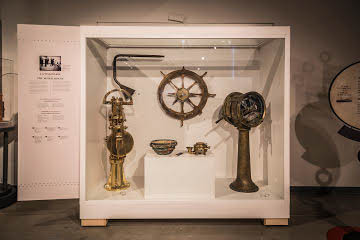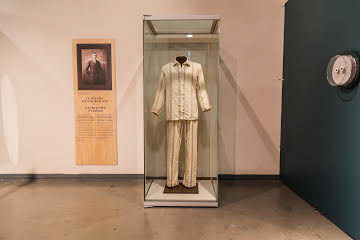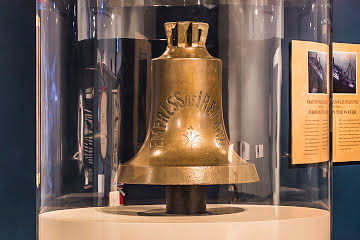
It was the largest death toll of any Canadian shipping accident in peacetime history. The Empress of Ireland became known as “Canada’s Titanic.” It was an appropriate moniker because the ship sank on May 29, 1914, two years after a collision with an iceberg doomed the Titanic, resulting in a death toll of 1,517.
The big difference in the two marine accidents was the damage to the ships. The Titanic’s bulkheads were supposed to be water-tight but they were not. The force of the collision added to the problem. As the ship tilted, bulkhead after bulkhead took on water. Still, the Titanic stayed afloat for two hours and 40 minutes before sinking. The Empress of Ireland sank in 15 minutes after its engine room was rammed by the Storstad. Without power, the captain was unable to run the ship aground.
Conlin says crew on both the Empress of Ireland and the Storstad saw each other in the distance. But a fog bank came in and in trying to avoid each other they actually moved closer together. Sophisticated navigation equipment to facilitate safe travel was not available then. The Storstad swerved to avoid a collision but failed and, instead, rammed the Empress of Ireland amidships. Of those who survived, many were saved by the Storstad crew. The same judge who handled the Titanic case, also officiated at the Empire of Ireland hearing. The judge attributed the blame to the Norwegian ship.
The tragedy of the Empress of Ireland is not as well known as that of the Titanic. Conlin hopes a temporary exhibit on the Empress of Ireland at the Ralph and Rose Chiodo Gallery in the museum will raise the ship’s profile. It will be on display until Nov. 13. The other two galleries at the museum are Canada’s Immigration Hall and the Braccty Gallery.
The display includes classic icons such as a 600-pound ship’s bell, the helm, telegraph and a steward’s bugle to announce dinner. There is even an automatic egg boiler from the ship. These early recoveries will be the last because the wreckage is now protected.
The ship lies in 130 feet of water but after 102 years at the bottom of the St. Lawrence River the Empress of Ireland is no longer safe for divers, says Conlin. Also, the currents in the area of the wreck are dangerous.
The ships, trains and availability of good farmland that attracted immigrants worked together to grow fledgling Canada’s economy. The period of Pier 21’s dominance in immigration lasted 43 years. It replaced Pier 2, whose outdated docks left the new, longer ocean boats jutting out into the harbour.
“We (Pier 21) opened in 1928, closely tied to the train station in Halifax,” says Conlin. The nearby train station enabled an immigrant to connect easily with a train that could take them almost anywhere in Canada they wanted to settle. Conlin says the end of the Second World War in 1945 launched a golden age that attracted war brides, refugees and economic migrants in the ‘40s and ‘50s. In the ‘60s airliners became bigger and faster and by 1971 there was little use for Pier 21.
But it lives on in Canadian history through the presence and work of the Canadian Museum of Immigration based on the actual Pier 21 site. This was where the immigration procedure actually began.
Artifacts help a museum and its staff bring history to life. Every recovered item tells a story, even a letter found at the bottom of the St. Lawrence River.
“There were mailed letters recovered from the Empire of Ireland wreck. The post office hired divers,” says Conlin. “There were hundreds of bags of mail.”
One letter that was readable was written by an English immigrant who settled in Saskatchewan and took up farming. The farmer’s letter, written to his family in England, was returned to him by the post office.
“A shipwreck is a time capsule.”








